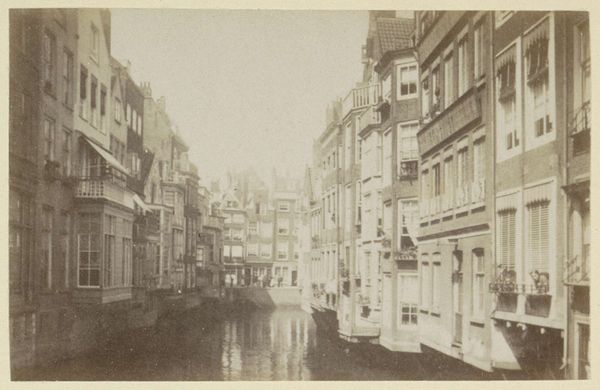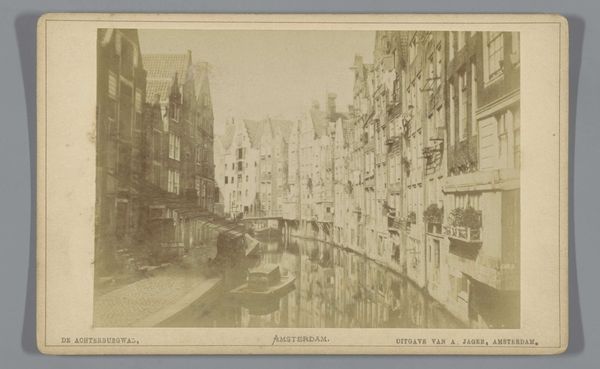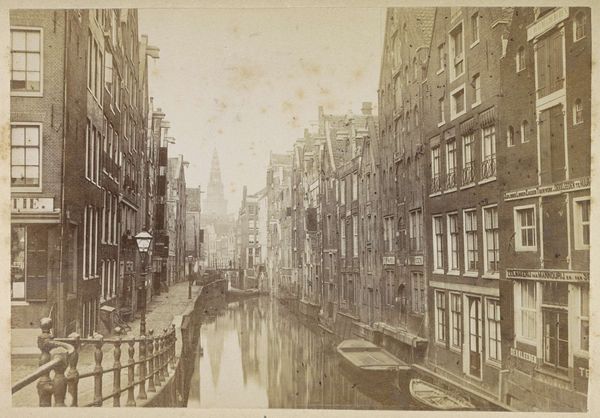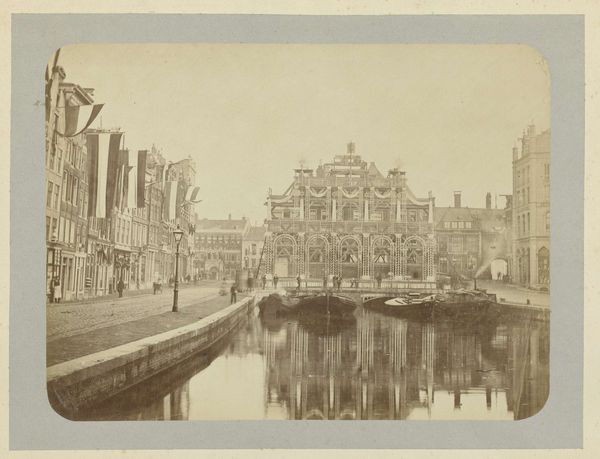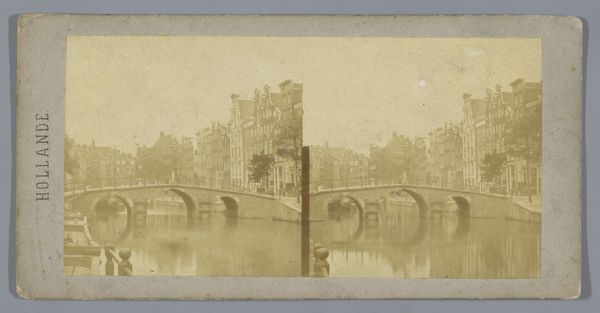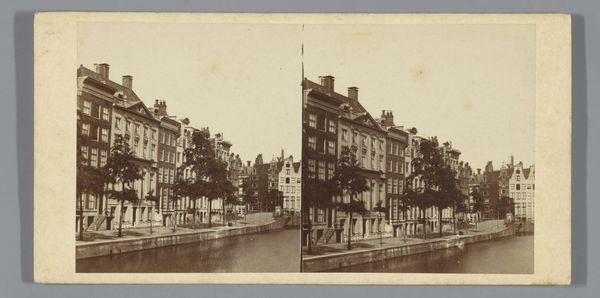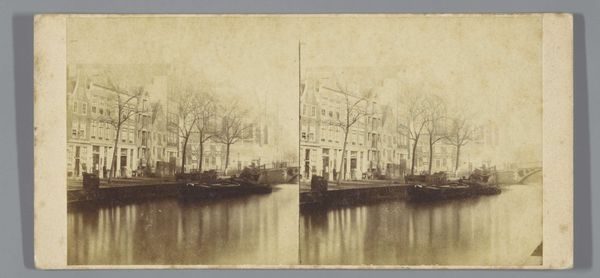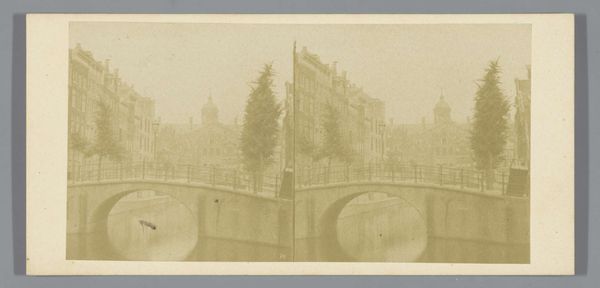
Huizen aan de Donkere Gaard en de Oudegracht, Utrecht 1859 - 1865
0:00
0:00
pieteroosterhuis
Rijksmuseum
photography
#
photography
#
cityscape
#
realism
Dimensions: height 86 mm, width 174 mm
Copyright: Rijks Museum: Open Domain
Editor: We’re looking at "Huizen aan de Donkere Gaard en de Oudegracht, Utrecht," a photograph taken between 1859 and 1865 by Pieter Oosterhuis. It's a cityscape, with the canal reflecting the buildings. The image has a serene quality to it, despite the industrialization creeping in. What strikes you most about this image? Curator: I'm particularly interested in the material process here. Oosterhuis was working in a period of great technological advancement in photography. Think about the collodion process he likely used; the labor involved in preparing the glass plates, the darkroom expertise. It collapses the boundary between artistry and skilled craft. It's not just about the aesthetic scene, but also the means of its production, wouldn't you say? Editor: Absolutely. And you can see a real understanding of chemistry involved. It's not "point and shoot," but really understanding materials, light and reactions to even get to the shot. So, do you think that understanding shifts our understanding of how we traditionally divide up high art and craft? Curator: Exactly. Photography like this challenges the hierarchy. It also reveals how technological advancements and new chemical processes impacted not just photographic art, but also broader industry and commerce, allowing for broader social change by letting more people depict images than through traditional painted artworks.. The resulting prints became commodities themselves, introducing reproducibility and contributing to a new visual culture of consumerism. The city becomes packaged for consumption. Editor: That’s a perspective I hadn’t considered. The rise of the middle class wanting affordable art, mass communication changing how cities promoted themselves... I hadn't placed photography inside that machine before. Curator: Consider how photography in the 19th Century opened doors to documentation but also new business. Hopefully next time, we can compare different photogrpahic materials to understand the effect even better! Editor: Absolutely. Thank you. I will look differently at photography from now on.
Comments
No comments
Be the first to comment and join the conversation on the ultimate creative platform.
